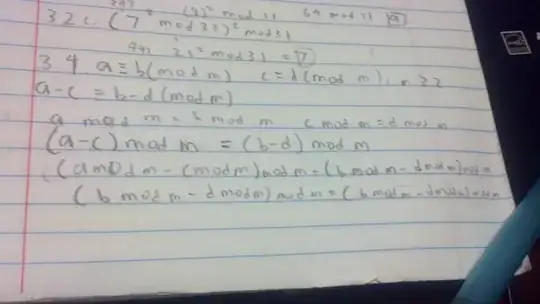This is from Discrete Mathematics and its applications

To do this proof, I used this mod property

Here is my work 
What I did was basically expand both sides of (a-c) mod m and (b - d) mod m with that property. Then I saw that with what I was given, the two sides looked the same. I am not sure if you're allowed to use that property to do this though.